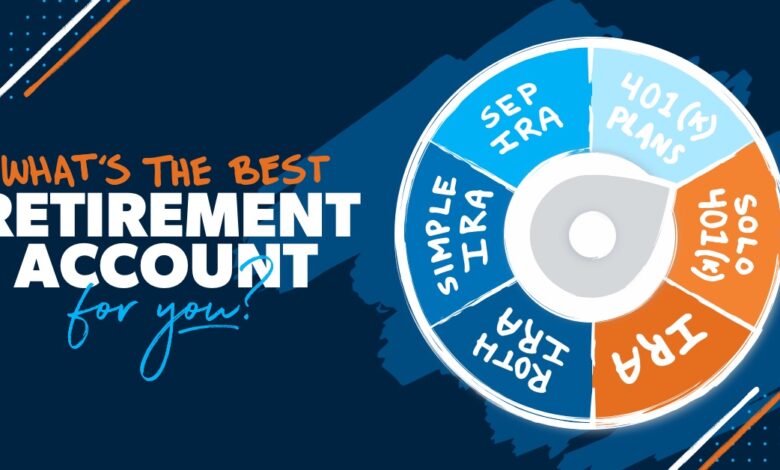A Comprehensive Evaluation of IRA and 401(k) Retirement Plans

Key Takeaways
- Understanding the investment mechanisms and benefits of IRAs and 401(k) plans will better inform your retirement planning decisions.
- Analyzing contribution limits, tax implications, and withdrawal exceptions to amplify retirement savings effectively.
- Delving into the importance of employer contributions to a 401(k) and how it can dramatically increase your retirement funds.
- Considering both flexibility in investment choices and the associated rules regarding access to retirement funds.
Table of Contents
- Introduction
- Contribution Limits Explained
- Tax Benefits of IRAs and 401(k)s
- Employer Match Contributions: A Significant Perk
- Comparing Investment Options
- Accessing Your Funds: What You Need to Know
- Early Withdrawals: Exceptions and Penalties
- RMDs: An Essential Aspect of Retirement Accounts
- Strategic Decision-Making for Retirement
- Conclusion
Introduction
Embarking on the retirement planning journey requires careful strategy and informed decision-making, especially when choosing between an Individual Retirement Account (IRA) and a 401(k) plan. Both accounts are excellent tools for pursuing a secure financial future; each offers unique features suited to different investment styles and long-term goals. Opting for an IRA or 401(k) is often one of the first decisions prospective retirees make, laying the groundwork for their financial trajectory leading up to and throughout retirement. This comparative analysis sheds light on the intricate details of IRAs and 401(k)s, empowering savers with the knowledge to select the most appropriate vehicle for their retirement funds.
Contribution Limits Explained
The IRS stipulates contribution limits on an annual basis, which serve to cap the amount that can be deposited into IRAs and 401(k)s each year. For 401(k) participants, these limits are generally higher than those of IRAs, potentially enabling individuals to set aside a significant sum of pre-tax income for retirement. This feature is particularly advantageous for high earners looking to minimize their taxable income. It is also essential to consider the implications of catch-up contributions for individuals 50 and older, which permit them to accelerate their savings as retirement approaches. Tracking these evolving limits and regulations is indispensable for fully optimizing retirement contributions. For up-to-date limits and guidelines, diligent savers often refer to comprehensive IRS resources.
Tax Benefits of IRAs and 401(k)s
Both IRAs and 401(k) plans are accompanied by substantial tax advantages that can have profound implications for growth over time. Traditional IRAs can be particularly beneficial for individuals seeking to reduce their taxable income in the year contributions are made. In contrast, a Roth IRA’s tax-free distributions in retirement provide a different kind of advantage, especially appealing for those who anticipate being in a higher tax bracket later in life. Similarly, 401(k) plans offer tax-deferred growth of investment earnings and contributions, meaning the funds within the account compound without being diminished by taxes until they are ultimately withdrawn. Understanding the intricacies of these tax implications is paramount for anyone aiming to leverage the full potential of their retirement savings.
Employer Match Contributions: A Significant Perk
Particularly with 401(k) plans, employer matching contributions are a defining feature that can tremendously augment an individual’s retirement savings. This entails employers contributing additional funds to match employee contributions up to a certain percent of their salary, effectively doubling the employee’s investment up to that point. However, one must be mindful of the associated vesting schedule, which dictates the rate at which an employee gains complete ownership of these employer-contributed funds. It’s a compelling reason to remain with an employer long enough to fully vest in the 401(k) plan, as this is essentially additional compensation that can significantly impact your retirement nest egg.
Comparing Investment Options
IRAs are traditionally known for offering various investment options, from individual stocks and bonds to mutual funds and ETFs, allowing investors greater freedom and control over their retirement portfolios. In comparison, 401(k) plans typically provide a curated selection of investment choices pre-selected by the employer or plan administrator. While this may simplify the investment process, it also constrains investors from the performance and fees of these select options. Investors seeking to tailor a diversified investment strategy that aligns with personal preferences and risk tolerance should weigh these differences carefully when evaluating their choice between an IRA and a 401(k).
Accessing Your Funds: What You Need to Know
The ease with which you can access the funds in your IRA or 401(k) can vary depending on several factors, not least among them being the circumstances under which you attempt to withdraw funds. For instance, if you decide to change employers, you may roll over a 401(k) into either a new employer’s plan or an IRA without incurring taxes. Becoming familiar with portability rules is vital as they can offer flexibility and freedom, particularly in a job market where career changes are expected, ensuring access to your retirement savings when you need them most while preserving their tax-advantaged status.
Early Withdrawals: Exceptions and Penalties
Withdrawing funds prematurely from an IRA or a 401(k) often leads to significant penalties, serving as a disincentive for using retirement savings for anything other than retirement. Despite this, notable exceptions allow early access to these funds under certain conditions, such as for first-time homebuyers or to cover education expenses, potentially without incurring the usual 10% penalty. Understanding these exceptions is essential for retirement savers who might need to access their funds due to unforeseen financial circumstances. Despite the availability of such exceptions, financial experts typically advise against early withdrawals to preserve the intended purpose and tax advantages of these retirement vehicles.
RMDs: An Essential Aspect of Retirement Accounts
As savers enter retirement age, they are confronted with Required Minimum Distributions (RMDs) from traditional IRAs and 401(k)s. This facet of retirement planning mandates that retirees begin drawing down their accounts from a certain age, as the IRS specifies. The RMD rules ensure that these savings are used for retirement as intended and not simply accumulated for additional tax advantages or estate planning purposes. Retirees need to plan for these distributions strategically, as failing to do so can result in substantial tax penalties. Concerning RMDs, seeking advice from trusted financial advisors or conducting further research on specialized platforms like Investopedia can provide crucial insights.
Strategic Decision-Making for Retirement
Ultimately, the decision to opt for an IRA or a 401(k) hinges on individual financial circumstances, career stability, and the availability of employer-sponsored retirement benefits, among other considerations. These choices involve more than just preference—they are strategic decisions that align with your financial situation, life stage, and future goals. Poring over your financial goals with a fine-tooth comb will allow you to take strategic steps toward a comfortable and secure retirement. Taking proactive measures, staying informed via authoritative financial information sources, and consulting with a financial advisor can aid in navigating this intricate landscape.
Conclusion
Making an informed choice between an IRA or 401(k) requires understanding each plan’s structure, benefits, and potential drawbacks. The extensive resources available, from IRS guidelines to expert opinions on platforms like Investopedia, can shed light on the oft-complex considerations involved in retirement planning. Paired with professional financial advice, these tools empower individuals to make decisions that best suit their unique retirement needs, ensuring a stable and fulfilling financial future.





